Search Questions
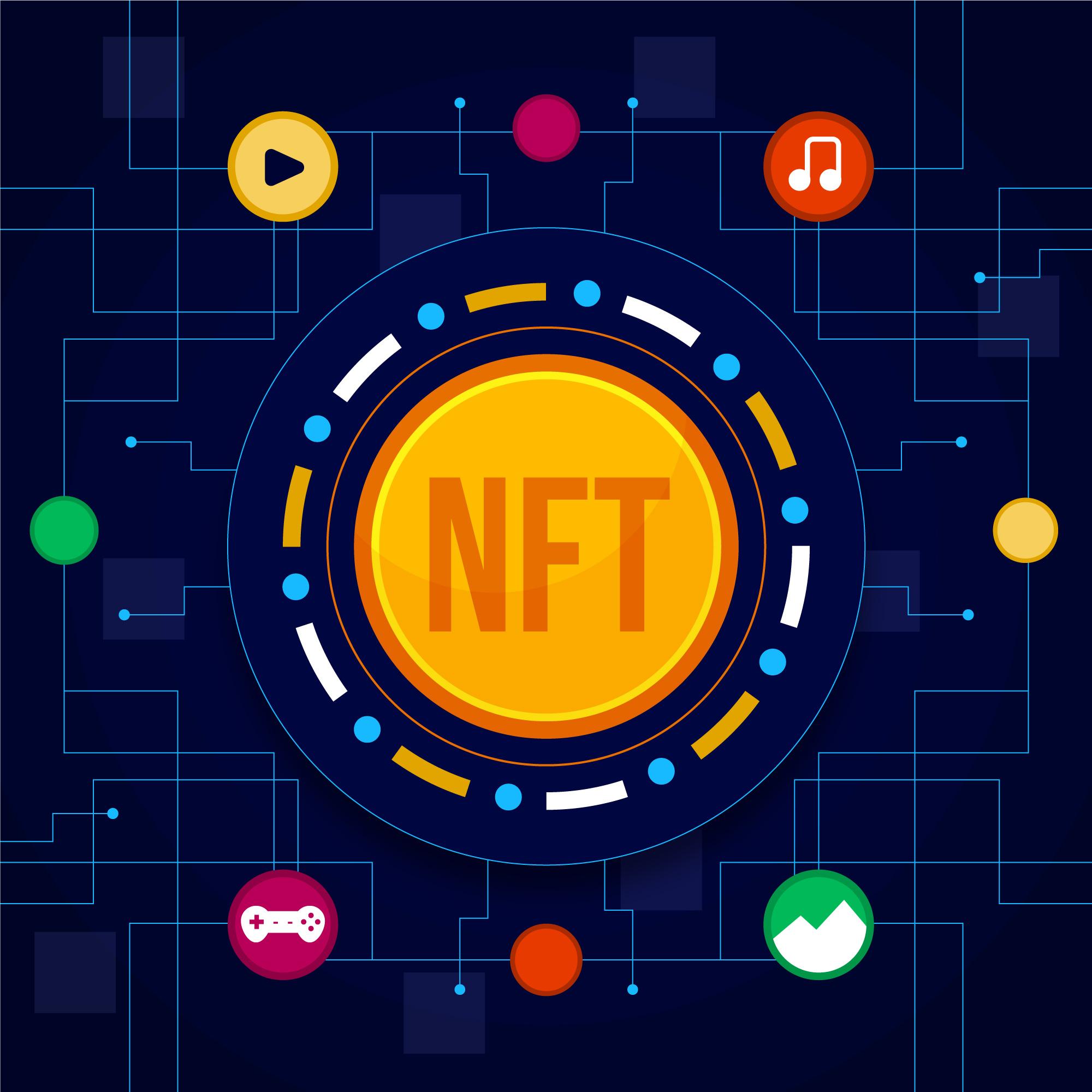
Understanding the Crypto World - NFT
NFT AuctionNFT Auction is a virtual event where participants sell or bid for digital assets or NFTs with an aim to crack the best buying or selling deal.Partial OwnershipPartial Ownership also known as fractionalizing, allows the NFT owners to sell their digital asset into fractions or pieces, where the asset has multiple owners.Full OwnershipFull ownership refers to owning the entire NFT instead of buying it into pieces or fractions. In full ownership, the digital asset is owned only by a single person.NFT StakingNFTs are transferred to a potential platform i.e. the staking platform that takes care of its security and governance. These assets are locked into the smart contract generating an opportunity for the delegators to claim a block and rewards. The staking rewards are determined by the asset’s capacity to develop an income stream like royalties.NFT WalletNFT WalletsNFT Wallets are basically Digital Wallets with the ability to hold NFT over different Blockchains under a single wallet and trade or hold Cryptocurrencies for the exchange of NFTs.
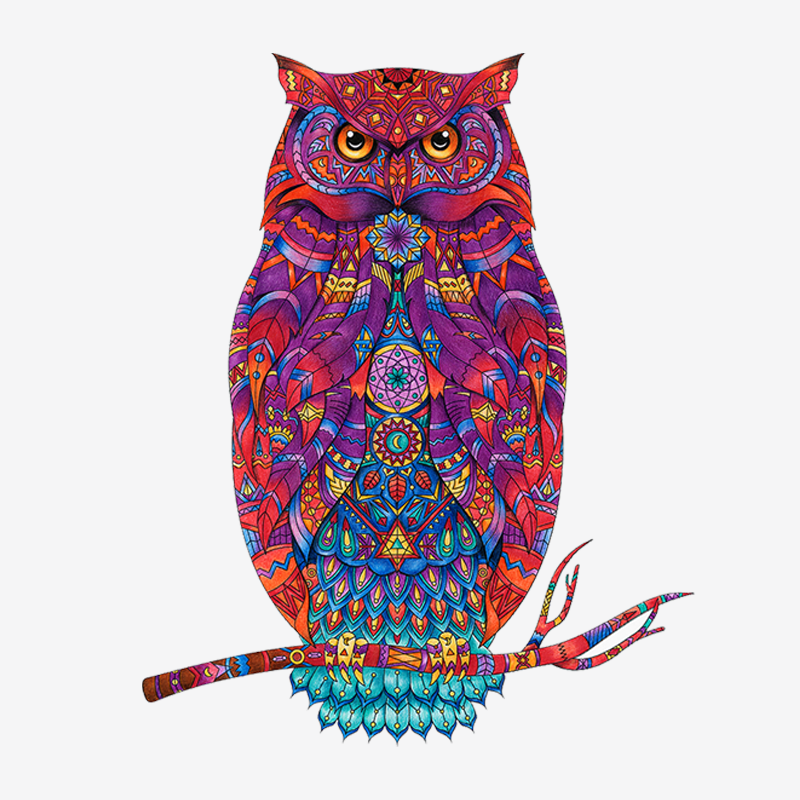
Art NFT: What it Means for the Creative Industry?
Art NFT is making a way into the creative industry generating opportunities for artists to list and sell their artworks. NFT Marketplace Development Services offer a virtual museum to the creative industry.What is an Art NFT? Art NFT refers to collectible digital assets to be traded on the NFT marketplace. Art NFT enables the artists to create NFTs of their unique artworks like paintings, sculptures, etc., and list them for sale on NFT Marketplaces. These NFTs carry a digital certificate of ownership showcasing the ownership of the asset produced. What makes NFTs valuable in the art market? Ownership of Digital ArtNFTs and NFT Marketplace emerged as a solution to authenticate the original digital art. It enables the artists to create an NFT of their unique digital art. Crafting an immutable record in Blockchain thus certifying it to be original and unique. Art NFTs enable artists to monetize the artwork by selling them directly to the buyer. Generate RevenueArt NFT has introduced a new way for artists to monetize their artworks. The NFT Marketplace Development for artists brought a quick and accessible way to produce artworks and reap rewards without having to chase payments. Also, some NFT Arts offer royalties to the artist. Every time the NFT is sold, the creator will receive 8-10% off the sale. The percentage will vary depending on the NFT Marketplace, the artist is using. Global Reach NFT Art has moved the art museums online, delivering a plethora of opportunities to artists for listing their artworks on a global scale. NFT Marketplace Development has helped the artists to sell their work to the buyers eliminating the documentation work. This was a bit difficult physical museum since many artists didn’t have access to the buyers on a global scale. Not only artists but, creative designers have also started leveraging NFT Marketplace Development Services to gain exposure for the creative designs in the NFT Market. The designers are creating unique masterpieces and integrating branding strategies to establish an emotional connection with the audience turning them into buyers. Art NFT has eliminated the need for buyers to visit the museums, anyone from anywhere can buy the Art NFT if he has access to the NFT Marketplace. How Can the Artists Capitalize on NFTs? Create and Sell NFTsCreating NFTs of artworks and selling them on the NFT marketplace is the primary way to capitalize on Art NFTs. Digital artists and content creators are crafting NFTs to sell their artworks and reach the secondary market. With every future sale of NFT, the creators earn a royalty income for the original masterpiece. Since NFTs are meant to be timeless, they help artists to construct an unbreakable revenue stream.Invest and Trade NFTsInvestors and collectors interact with NFT Marketplace similar to the way they engage with the stock market. They invest in NFTs, wait for value appreciation, then sell and earn profits. Launch your NFT MarketplaceAnother way to capitalize on Art NFTs is to launch an NFT Marketplace for artists to display their artworks. The artist can opt for his own NFT Marketplace, urging creators to list their NFTs for sale. This will help the artist to generate revenue by receiving the commission from the creators.NFT trading on NFT Marketplace will create a business model for the owner of the marketplace may be an artist or an investor. Companies like RWaltz, offer customized NFT Marketplace Development Services based on the requirements and specifications of the clients. Creating a customized NFT Marketplace with an intuitive interface will garner the attention of artists on a global scale leading to increasing sales on your marketplace and ultimately generating revenue. Here are some NFT projects by RWaltz- a Robust NFT Marketplace Development Company: Meta Master Guild Gaming NFT NFT Marketplace Development ARTII NFT MarketplaceWrap UpHopefully, the above article has enlightened you on the importance of NFT Art in the Creative industry. For further queries, feel free to connect with our experts. Are you an artist and looking for a way out to earn additional revenue? Take your artworks digitally and create your NFT Marketplace for Artists and investors across the world. Hurry up! What are you waiting for? Grab the opportunity and schedule a meeting with our experts to avail our customized NFT Marketplace Development Service.
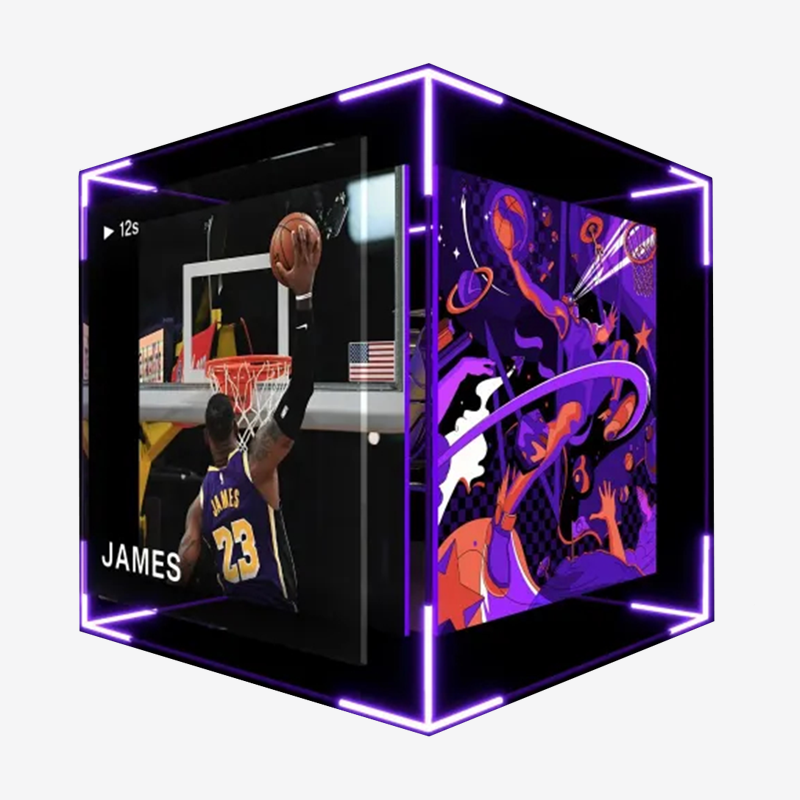
What NFT means for Sports Industry?
The adoption of NFTs is spreading like a wildfire across industries and sports isn’t an exception to this. With 8000+ sports played in the world, NFTs and NFT Marketplaces are disrupting the ecosystem for fans, players, brands, clubs, federations, leagues, and IP owners. What is Sports NFT?Sports NFTs refer to digital collectibles and trading cards of sports celebrities or teams. The Sports NFT is defined as a distinct and non-interchangeable record on a digital ledger. These Sports NFTs can include popular sports moments, athlete assets like bats, jerseys, etc., and trading cards. What are the Types of Sports NFTs? Sports NFTs help the athletes to establish an emotional connect with their fans by creating their NFTs and auctioning or selling them.Trading Cards: Trading card NFTs are popular in some international sports like Baseball, Hockey, and American Football. Besides provoking a nostalgic feeling, collecting the trading cards is a unique way to support your favorite athlete. Athlete Assets: Athlete assets like jerseys, wristbands, socks, boots, signature bats, etc. have a great hype amongst the sports Fanclub. Athletes have moved these assets to NFT Marketplace, integrating NFTs into their advertising strategy. Historic Moments: Historic moments are cherished by fans in every sport and crafting NFTs of such videos has been the latest trend amongst athletes and sports federations. Tokenizing such moments helps sports federations to build curiosity and enthusiasm for their favorite teams and athletes during the sports leagues. Memorabilia: NFTs of Autographs, Trophies, and awards can also be created to establish an emotional connection between the fans and the athletes. Why are NFTs and NFT Marketplaces Important for Sports? Revenue:The primary goal of creating Sports NFTs is to generate revenue for the creators. Every time the NFT is sold the creator will receive some percentage of the NFT sale. Sentimental Connection:Sports NFT help the athletes, sports federations, and teams to generate emotional connections with their fans by auctioning NFTs of their favorite stars. Add Brand Value:NFT Marketplace Development Service is the new sensation in the Sports industry. Leveraging Sports NFTs will help the athlete to garner more popularity and stay ahead of its competitors.Royalties:Trading sports NFTs offer substantial value on the NFT sales in addition to the royalties on secondary sales. Liquidity:Sports NFTs offer quick liquidity, with a massive amount of fans holding NFTs assets of their beloved athletes. Wrap UpWe hope that the above article has enlightened your knowledge of Sports NFT. If you have queries, you can connect to our experts at any time. Are you an athlete or run a Sports Federation? Are you looking for a robust NFT Marketplace Development Company, click here to check what we can offer you. Hurry up! Schedule a meeting right away and let’s discuss your project idea.
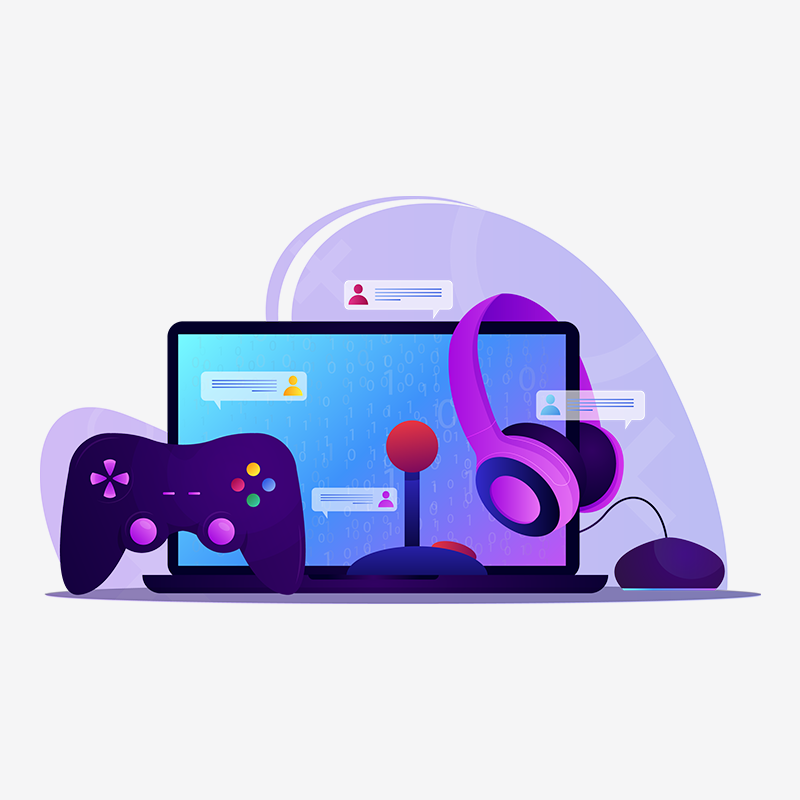
What does NFT Marketplace Mean to the Gaming Industry?
NFT Marketplace Development is inevitably taking off in the Gaming industry too. Gaming NFT is 2022’s biggest NFT trend, their impact on the world’s 3 billion gamers is hard to ignore.What are Play-to-Earn Games?A gaming NFT platform combines conventional gaming designs and unconventional gaming mechanisms enabling users to have more control over in-game assets. These digital assets are distinguishable and tamper-proof since they are NFTs. The acceptance of NFT Marketplace and NFT token standards enables developers to preserve the uniqueness of these in-game assets like skins, characters, weapons, virtual lands, and much more.This NFT-based ecosystem enables the players to claim ownership of game assets through 3 main gaming strategies. These strategies include creating or breeding new characters, purchasing digital items on native or NFT Marketplace, or unlocking and earning new NFTs. Any one of these strategies you choose will help to earn exclusive ownership of in-game NFTs. These NFTs can be sold to make profits from the trades. Thus, this NFT-based gaming model is called play-to-earn gaming.Why Gaming NFT is Booming? Gaming NFT Marketplace helps the business owner to attract venture capital For every NFT token transacted through the gaming platform, the owner can charge a transaction fee to earn additional income Gaming NFT Marketplace offers to play to earn business model with more flexibility and security The gamers are attracted to the gaming NFT market since they have full control of their in-game assets NFT gaming has opened a unique way for businesses to advertise and market themselves.Which are the Top Gaming NFTs?Axie InfinityAxie Infinity is a Gaming NFT Platform inspired by the Pokemon game series but, with a blockchain twist making the game more exciting. This is an Ethereum-based game, where players breed and collect NFT-based digital pets called Axies. Each Axie has its own genetic imprint and these digital pets are tradable on Ethereum NFT Marketplace. The price of each Axie depends on its rareness and unique traits.Axie Infinity has gained momentum in developing countries like the Philippines, where players earn substantial income by playing NFT games. To begin playing this game, the player needs to purchase 3 Axies. For battle, quest, and adventure mode, the player receives Smooth Love Potion (SLP)- its native utility token as a reward.SplinterlandsSplinterlands depicts a free-to-play NFT-based tradable card game enabling users to earn as they play. The gamers earn rewards when they win card matchups. This gaming NFT Development is built on the Hive chain.To begin playing Splinterlands, the gamers need to buy a starter pack of cards, register a Steem account and unveil these purchased cards on the gaming platform. There might be a possibility that the gamers are lucky enough to have unique and rare cards in their 1st purchase. Also, the probability can be that similar cards appear multiple times. With multiple similar cards, gamers can combine them to boost their powers or sell them to receive cryptos.Star AtlasStar Atlas is one of the most anticipated gaming NFT platforms that is setting new trends in the NFT sphere. This play-to-earn game is a blend of expansive space exploration gameplay, carefully designed strategy elements, and top-quality graphics.This gaming NFT platform is centered around space exploration, mining, and development. It offers the players the flexibility to create their starship, crew, and avatars while setting up mining facilities as they venture across the universe. Most in-game assets are represented on Blockchain as NFTs and will be tradable on Star Atlas NFT marketplace.Wrap UpHopefully, the article has enlightened you on gaming NFT Marketplace Development. If you have any queries, feel free to connect with us!Are you looking for NFT Marketplace Development Service for your gaming platform? Your search ends here with RWaltz- a reliable NFT Marketplace Development Company. Hurry up! Schedule a meeting with our experts right away!
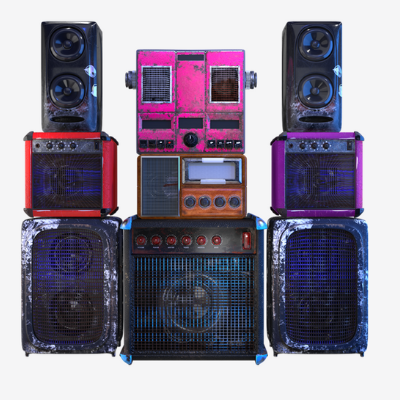
What NFT Means for the Music Industry?
The last decade, witnessed a major transformation in the Music industry with the rise of NFTs and NFT Marketplace Development. NFT development introduced a new way for artists, singers, and musicians to monetize their work.What is Music NFT? Music NFT depicts a certificate of ownership for a unique musical work delivering the exclusive rights of the original content to the creator. An artist can create NFTs of videos, artwork, or even music and monetize them to earn additional revenue. How NFTs are Transforming the Way Music Sounds? The music industry has a huge fan base and minting music NFTs on NFT Platforms is a way for artists to build a sentimental connection with the fan base. NFT platforms introduced a new way to connect fans and musicians, monetizing the music by selling them directly to fans. Additionally, the artists can earn royalties in the secondary market for every sale of music NFTs. Trading music NFTs on NFT Marketplaces has always been a craze. Today, a few of the emerging platforms are exclusively focused on trading and minting music NFTs. The musicians and celebrities are leveraging the NFT Marketplace Development Services, as an advertising medium to stay ahead of the competition and increase their brand presence. Music NFTs are not just a buzz but, have turned into a crucial part of marketing strategy for musicians. How to Create Music NFTs?Creating NFTs refers to minting the NFTs that begin with the original piece of art, music, video, 3d animations, gifts, and images. Post creating your Music NFT, it’s time to choose the NFT Marketplaces like OpenSea, Rarible, etc. You can also create your NFT Marketplace with Blockchain development companies like RWaltz. Post choosing the NFT platform, integrating “Ethereum Wallet” is crucial. NFT Marketplace like OpenSea asks for Metamask integration that can be directly accessed on OpenSea. You can download the Metamask chrome extension to create your account. Minting NFTs will require funds in the Ethereum wallet to pay the “Gas Fee” which is a one-time payment required for each transaction on OpenSea. The last step is creating the account on NFT Marketplace Development you choose and crafting a collection to list your Music NFTs. Which are the top Musicians to leverage NFT Marketplaces? Kings of Leon Kings of Leon turned one of the 1st bands to craft an NFT for their latest album “When you See Yourself”. With the sale of these NFTs, they generated $2 million with six golden ticket auctions.Steve Aoki Steve Aoki, the superstar American DJ and producer earned $4.25 Million with his debut NFT Collection called Dream Catcher. He sold his NFT collections on one of the leading NFT Marketplaces. EminemEminem’s 1st NFT collection, “Shady Con” garnered great success with it being sold on one of the leading NFT Marketplace at the end of April. With the sale, Eminem earned $1.78 Million. This NFT collection was a big hit as it comprised some iconic characters from his music videos.GrimesTikTok’s most popular communist, Grimes launched his NFTs titled “Earth” and “Marks” which brought him the bulk of sales accounting for $7 Million. His video NFT “Death of the Old” managed to earn $389,000.RACThe Grammy Award Winner and the Portuguese-American producer RAC released NFTs related to his new record “YOU”. He earned $708,000 which was more than his combined album sales. Let’s ConcludeHopefully, we have enlightened your knowledge on Music NFTs and NFT Marketplace Development. If you have questions, feel free to connect with us. Are you looking for an NFT Marketplace Development company? Take a look at our services and schedule a meeting right away to discuss your project idea. Let’s together take your NFT project ahead! Hurry up! Lead the competitive edge with our robust NFT marketplace development services.
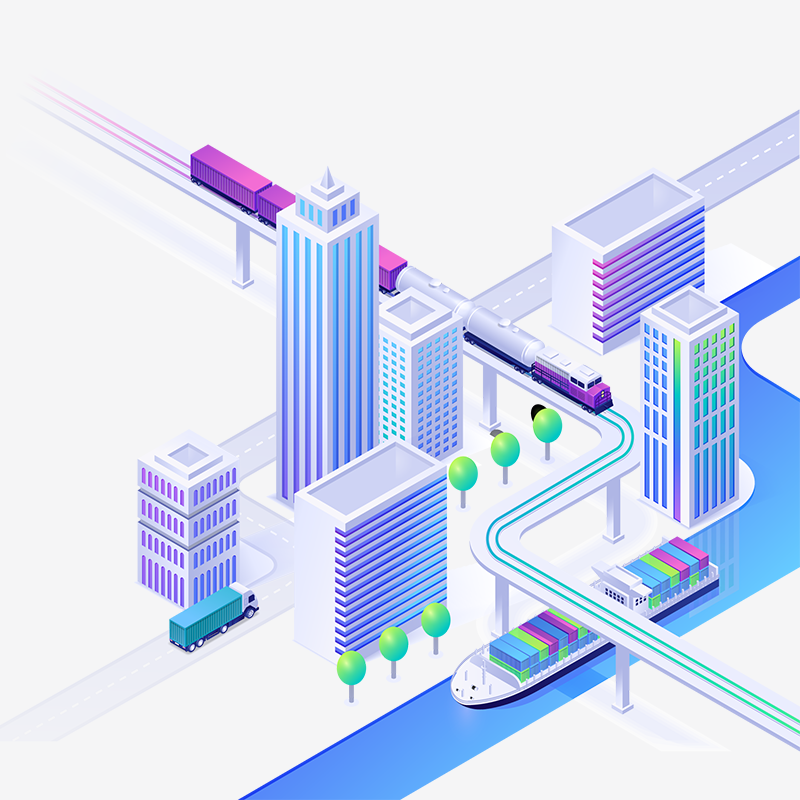
What NFT Marketplace Means for Real Estates?
NFT Marketplace Development Services are setting technological trends across industries. From record-breaking NFT arts to marketing strategies, NFT development is transforming it all. The industries changing at a slow pace like real estate have also begun leveraging NFT Marketplace Development. Three Real-World Applications of NFT Marketplace in Real Estate? Fractional Property Ownership NFT Marketplace has stormed the real estate world too. The real estate NFT refers to depicting the ownership of physical property and fractional ownership is an example of this. The property owners can sell a part of their real estate to multiple small investors by issuing tokens on Blockchain. The investors can hold these tokens to receive a rental income for the token issued. This enables people to buy or sell fractional ownership in rental estates eliminating the middle-man potentially in a liquid market. Property Sales Real estates can be converted into NFTs to own and sell them digitally. NFT-backed properties on Blockchain can be instantaneously bought and sold via Smart Contract Developments. Thus, NFTs help in increasing liquidity in the land and properties. Tokenization of property opens gateways to a wider consumer base. Mortgages NFTs in real-estates offer mortgaging since it enables shared ownership. The owner of NFT-backed property on an NFT Marketplace Development can apply for a loan through lending platforms. These lending platforms enable lenders to receive repayments using blockchains based on the amount they had lent. Top Metaverse Leveraging NFT Marketplace In 2021, NFT Marketplace witnessed a record of $4.3M paid by Republic Realm for virtual land in the Sandbox. It was the largest purchase of virtual land ever. Decentraland Created in 2015, Decentraland depicts a virtual world focused on building and owning an NFT virtual space called “land”. This NFT i.e. virtual space is divided into parcels and is bought with Mana, the cryptocurrency token for this virtual land. The transactions associated with the process are recorded on the Blockchain and the NFT is transferred to the buyer’s digital wallet. Once the user has signed up, he needs to create his digital wallet and purchase the parcel to own the land. Since the buyer has full control of his digital environment, he can build structures, develop games or even create art. Polka City Polka City is termed to be a revolutionary real estate NFT Marketplace that enables users to own virtual lands and generate income. These digital assets are contract based making it easier to generate income that is paid in the platform's native token POLC. Once you sign up with Polka City, you can choose the type of investment that suits your preference. Also, it eliminates the need to create a new Blockchain wallet, the existing Ethereum wallet can be integrated to begin earning. SuperWorld SuperWorld is an NFT Marketplace that enables users to create their own world and sell it to earn income. Its Real Estate Platform enables users to buy, trade, and sell NFT pieces of land measuring around 100m x100m in the real world. To get started with SuperWorld, you don’t need to have coding skills or experience in Blockchain. Your real-world knowledge is all you need to begin crafting your property here. The platform offers an opportunity to monetize your property through gaming, analytics, e-commerce, digital commerce, etc. Wrap UpHopefully, the above article has enlightened your knowledge of NFT Marketplace development in real estate. For further questions feel free to connect us. Are you a real estate company and have not yet stepped into the world of virtual land? Scroll yourself to our NFT Marketplace Development Services and take a look at how we can benefit your business. Hurry up! Schedule a meeting with us right away!
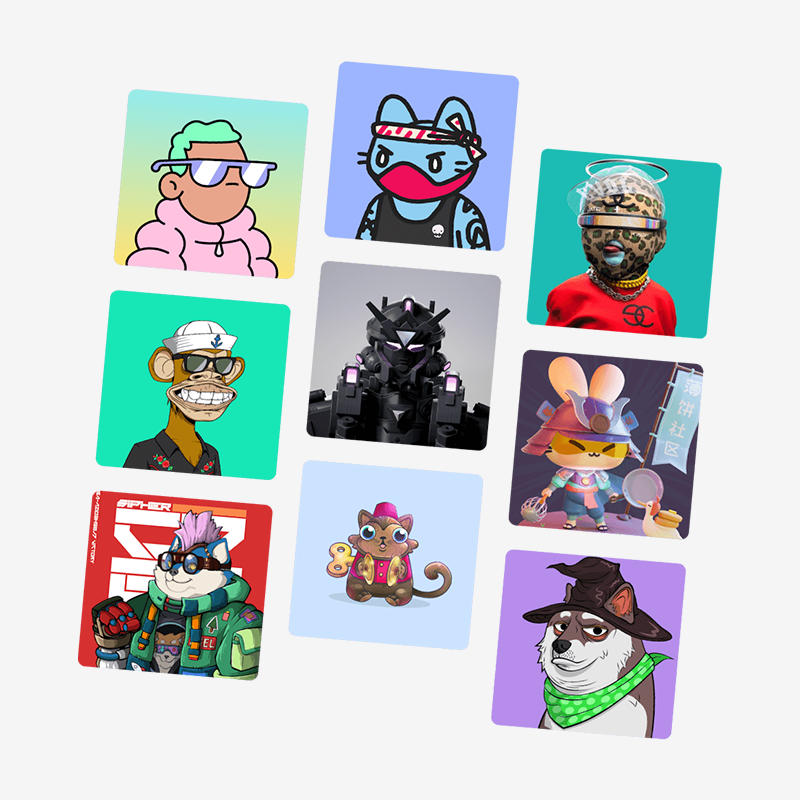
What does NFT Marketplace Means for Digital Collectibles?
NFT Marketplace Development has opened gateways for Digital Economy with every industry leveraging NFTs. In the present scenario, the NFT Market is largely driven by Digital collectibles. Why NFT Marketplace is a Game Changer for Digital Collectibles? Before NFTs, the digital files could be easily duplicated or copied making it difficult to differentiate them from original files. Thus, buying and collecting digital art or collectibles was a tedious task. NFTs have however enabled replicating certain traits that are limited to items in the physical world, like uniqueness, proof of ownership, and scarcity. This helps creators to own and sell their digital art in a true sense thus crafting a new market for their original art and collectibles. NFT Marketplace offers the creators a percentage of all future sales for their NFT Collectibles. NFTs are helping artists and creators earn additional revenue by displaying the digital collectibles on NFT Marketplace. In addition, NFT Marketplace eliminates the middleman to verify the authenticity of work, displaying the details to everyone in the marketplace. This ensures transparency. What Does a Buyer receive on Purchasing NFT Collectibles? Digital Collectible: A user buying an NFT collectible on NFT Marketplace receives a piece of digital art, video clip, trading card, photo, a piece of music, etc he or she has paid for. In other words, a user receives an NFT Collectible he made a purchase. Ownership Certificate: The NFT Development offers the certificate of ownership to the buyer ensuring the same NFT isn’t bought by another buyer. Proof of ownership is an important factor in the NFT sphere. Top NFT Collectibles to watch for? PsychoKitties: The New Era"PsychoKitties: The New Era" NFT Collectible feature 10,000 unique metaverse characters that are generated from 96 hand-drawn trains with multiple levels of rarity. Two PsychoKitties on NFT Marketplace development are not similar and hence can be owned by two different persons on Blockchain. Loaded Lions “Loaded Lions” is the 1st platform-owned profile picture (PFP) project launched in the NFT sphere. These NFT collectibles consist of 10,000 unique and algorithmically generated PFPs. Loaded Lions are the NFT Collectibles on the NFT Marketplace depicting a brave and Bold bunch always living life to the fullest. The TRIP: Genisis The TRIP: Genisis is the NFTs featuring Mushroom Character PFP collection. These NFT collectibles are a collection of 9989 unique PFPs with around 200 individual traits. Wrap UpHopefully, you have acquired enough knowledge of NFT Collectibles. For any query regarding NFT Marketplace Development or NFT Development, feel free to connect us. If you are looking for a top-notch NFT Marketplace Development Company, your search ends right here! Schedule a meeting with our team to take your project ahead.
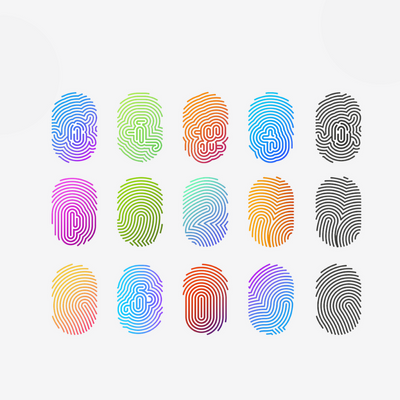
What does NFT Marketplace Means for Identity
NFT Development refers to creating digital assets of real-world objects like artwork, animations, images, virtual land, collectibles, etc. With its popularities across industries, NFT Marketplace is being widely accepted by businesses and investors. The growing popularity of NFTs stepping ahead with NFT-enabled IDs.Let’s dive in deep to explore more.Verifiable Identity with NFT MarketplaceWe have witnessed multiple use cases of NFTs that surround capturing and claiming ownership of digital assets. NFTs have paved the way in real estate where firms are leveraging NFT Marketplace Development to verify physical assets. A similar concept is being applied to people, where individuals can verify their online identity through NFT Development.NFT-enabled tokenized identity with on-chain data offers interesting perks like control, security, transparency, trust, and value. Verifiable Identity brings a concept of eliminating the need to carry multiple documents. Identity NFT will carry the entire identity information of an individual.What are the Benefits of NFTs for Identity?1. No need to carry multiple documents2. All documents right from education market sheets to driving licenses can be accessed on a single NFT 3. Ensure security and privacy of identity with NFT 4. Derive a digital identity to the user5. Eliminate the tedious and time-consuming identity verification processesThe Ghazali Effect: Indonesians Sell their ID cards as NFTsThe Ghazali success in NFT Marketplace is defined by people not only selling random stuff but also their IDs as NFTs. Indonesians clicked photos of their ID cards and sold them as NFT on Marketplace. Account Yahlya_kids sold the selfie with their Identity card on NFT Marketplace Development as an NFT for 0.5 Eth.Wrap UpHopefully, the above article has helped you learn about Identity NFT Development. If you have any queries, feel free to connect to our experts. Are you looking for an NFT Marketplace Development Company? You are at the right place, schedule a meeting with us to take your project ahead.
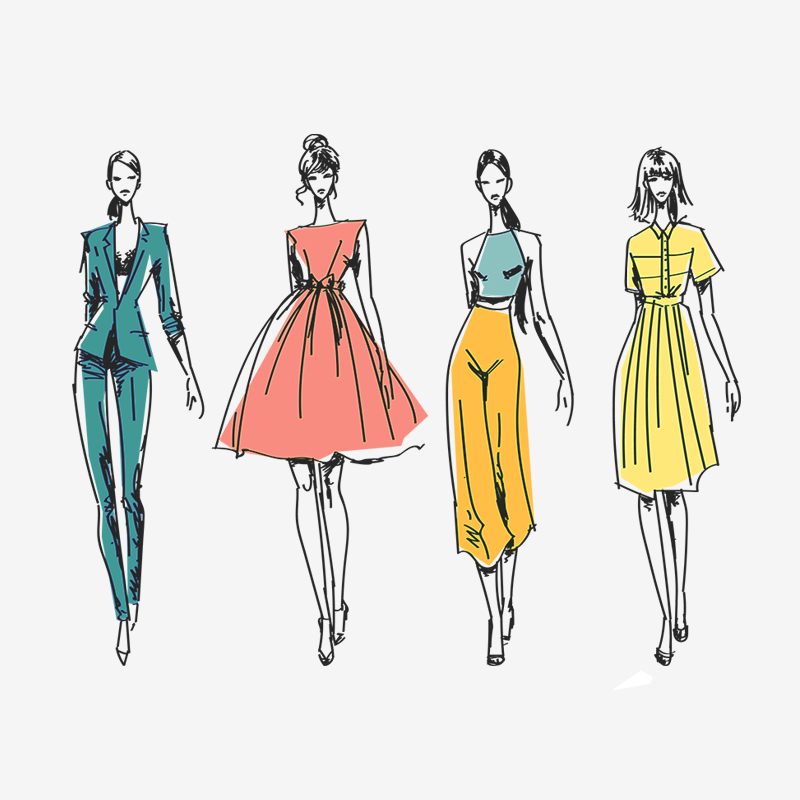
Fashion NFTs: What NFT Marketplace Means to the Lifestyle Industry
Fashion is known for setting trends may it be lifestyle or NFT Marketplace. Vogue Business Index features 17% of the fashion brands that have leveraged NFT Development. Why Fashion Brands are Leveraging NFT Marketplace Development? NFT Marketplace offers a unique way to represent the fashion brands digitally Create an exclusive and personalized experience for customers through unique fashion NFTs Earn revenue on NFT Marketplace by selling these digital assets Generate excitement through NFTs amongst the audience for a new product launch Tailor unique loyalty programs by crafting NFTs Give reason to the customers to understand your USPs Stay ahead of the competition with NFT Marketplace Development ServiceTop 5 NFT trends in the Fashion Industry RTFKT – Virtual Sneaker DropsThe RTFKT brands established in 2019 gained momentum for selling virtual sneakers. RTFKT’s collaboration with a young and rising crypto-artist crafted a series of three sneakers accompanied by digital merchandise. Leveraging NFT Marketplace Development Service, RFTKT earned USD 3.1 Million by selling 600+ sneakers. Winners could also redeem a physical version of sneakers but, the value was all in limited edition digital iterations. Gucci- Luxury Fashion House with NFT Short filmsGucci- the iconic Italian fashion brand’s NFT wasn’t styled after fashion goods but, was inspired by a film. This 4-minute film was auctioned for 25000 Million USD at Christie’s auction. This was Gucci’s 1st NFT that was a part of the Aria Collection- created to celebrate its 100th anniversary. Louis Vuitton and NFT Games To celebrate its founder’s 200th Anniversary on 4th August, Louis Vuitton the iconic fashion brand came up with a unique idea to combine fashion and NFT Marketplace. It introduced “Louis the Game”, which is an adventure game where players ought to traverse through a dollhouse belonging to Vivienne. This game featured 30 hidden NFTs with 10 NFTs in collaboration with “Beeple”, who is a popular NFT artist.The NFT Hoodies by Overpriced Overpriced to be considered as the world’s 1st NFT-driven fashion brand. Its 1st drop comprised of a physical hoodie that splashed a scannable code enabling the person to show their NFTs to anyone they wish to. This hoodie was sold on NFT Marketplace Development BlockParty for USD 26000. NFT Enters Fashion Week The outbreak of COVID-19 led to fashion weeks going Digital and NFT Marketplace played a crucial role here. “French Fashion” and “Haute Couture Federation” collaborated with the “Arianee” platform for NFT Development. These NFTs could be exchanged in 2022 men’s fall/ summer fashion week in Paris or even in other highly rated fashion exhibitions. Wrap UpHopefully, the above article has delivered enough knowledge on fashion NFTs. If you have any questions regarding NFT Marketplace Development Service, feel free to connect us.Are you looking for an NFT Marketplace Development Company for your fashion brand? Scroll yourself to the best we can offer you and schedule a meeting with to take your project ahead.
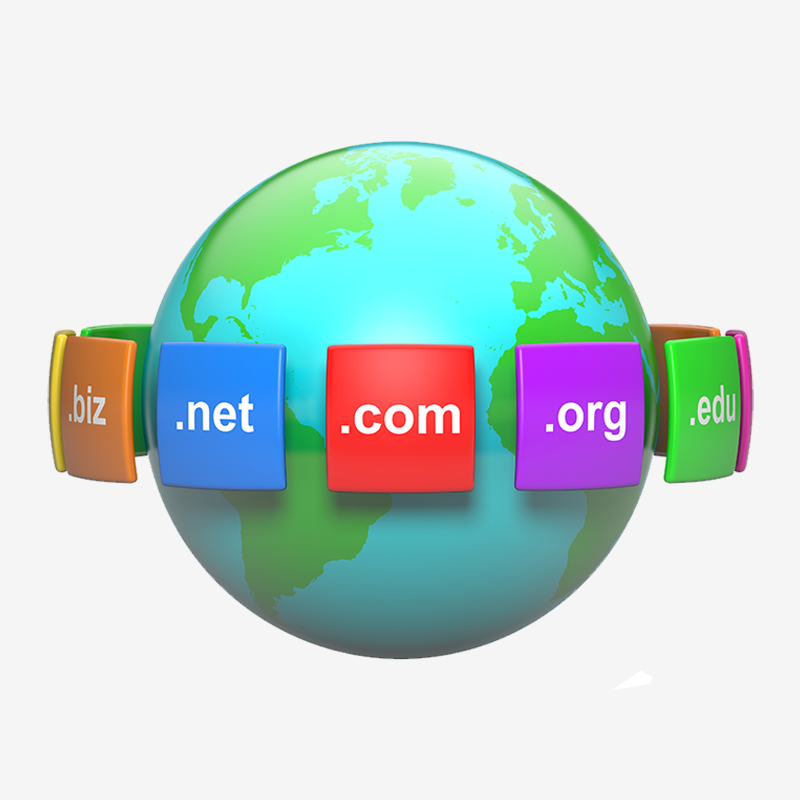
What Does NFT Marketplace Means for Domains
Revolutionizing the internet era, NFT Marketplace Development is creating hype for domains too. Domain NFTs live on a public Blockchain and enable the user to have complete control of their stored data. What is a Domain NFT? Domain NFT is defined as a suite of smart contracts i.e. software written on a public blockchain. NFT Marketplace ensures the data stored isn’t controlled by a single entity or a company, instead is transferred to the user. Domain NFT is similar to the traditional domains with a thin line of difference. Annual Registration Fees: Since NFTs are stored on public Blockchains, it offers users to completely own their Domain NFTs. These domains in the NFT Marketplace Development have no expiration and there is no need to renew them eliminating the fees. Simplified Wallet Address: Domain NFT Development uncomplicates the multiple wallet addresses replacing them with a single domain name. Why Domain NFT Development is Important? To simplify the crypto transactions by replacing the complicated wallet addresses with the domain name as a username. Domain NFT Development enables the user to login into applications with a domain name as a universal username in web3. Unlike the traditional domain names, NFT Marketplace Development offers domains that users have complete control of. The user will buy the domain for once but, will own it for life. It simplifies the creating and hosting of websites, ranging from personal websites to NFT Marketplaces. Top Use cases of Domain NFTsContent CreationDomain NFT helps content creators retrieve control and ownership of their digital identity. NFT Marketplace Development eliminates the need for content creators to rely on social media to host their content. Instead, they can use blockchain technology to host digital content on the decentralized web. The creators hosting the content on Domain NFT Development can own the data and analytics. Professional WebsitesCompanies can start hosting their website on Domain NFTs rather than hosting on traditional ones. The NFT Domains mitigate multiple risks in the online businesses like paying recurring hosting charges, staying bound to platform terms and conditions, or domain companies reclaiming the website. Communities and ForumsNFT Domains redefine how users interact with each other in digital communities and forums. These communities and forums can benefit through free and inclusive discussions on decentralized sites with no need to rely on centralized services. Wrap UpHopefully, the article has enlightened your knowledge of Domain NFT Development. For any query, connect to our experts. Are you looking for the NFT Marketplace Development Company? You are at the right place, schedule a meeting now.

What are the key takeaways of CAR NFT
NFT Marketplace Development Service is transforming the automobile sector by adding brand value to the automotive brands and their car designs. Car manufacturers are now partnering with NFT Marketplace Development Company to craft NFTs of their signature car designs or videos. Today, the NFTs are being used to maintain vehicle ownership or even the entire information.Let’s dive in to learn more about Car NFTs: What is a Car NFT? A Car NFT refers to non-fungible tokens specifically designed with car owners in mind. Automobile manufacturers are experimenting with multiple types of NFTs for cars, which might be as a marketing stunt or to leverage the tamper-proof property of NFTs. The 5x WHAT Does Car NFT Refer to: Artwork released as an NFT by a car brand A clip of a live car racing event Proof of ownership of a car Access key to a vehicle Record the service history of a vehicle The 5x What does tokenize car ownership include: Car ownership token Car registration token Car insurance token Car activation token: lock and engine Car sharing or rental token The 3x WHY of Tokenized Car Ownership Include: Utility through better integration: The car is driven by the digital wallet Utility through less friction: tokens share the info so car owners don’t need to Liquidity via rental: sweat the asset without a middleman3X WHAT are the Benefits of NFTs: Streamline the process: Car NFTs ensure the entire information of the vehicle is stored within a token offering a streamlined process. Eliminate Intermediaries: NFT Development for Cars simplifies the business process between two parties eliminating the middleman. NFTs Establish Trust: Smart Contract development in NFTs integrate the element of trust since they are immune to alterations and are highly secure. Let’s Conclude: Hopefully, the above article has enlightened you on Car NFTs. If you have any queries, get back to our experts and resolve your doubts right away!Are you looking for an NFT Marketplace development company? Scroll yourself to our services. Hurry up! Schedule a meeting with our experienced professionals and share your project idea to get a quote.

How Marketing Managers Can Leverage NFT Marketplace
A few months ago, NFT Development was just a buzz. Fast forwarding the time, NFT Marketplace is making headlines every day with its new and unique way to market and advertise brands.NFTs have been in existence since 2017 with the launch of CryptoPunks a collection of 10,000 unique digital characters. But, NFT Development gained popularity with CryptoKitties, a virtual cat trading game that went viral. How Marketers Can Leverage NFT Marketplace? Create Brand Awareness To carry out their brand awareness campaigns, Marketers have started crafting their own NFT Marketplace. They can create digital versions of physical products and can mint them as NFTs. Not only big brands but even small brands like RTFKT developed NFTs to create brand awareness and these NFTs went viral with the brand garnering popularity. NFTs have paved the way for Metaverse exposing the marketer’s products to the massive number of users in the metaverse. Marketing firms have started leveraging NFTs to create a whole new virtual brand experience through 3D models, videos, audio, gifs, collectibles, etc. NFT Development is assisting the companies to efficiently market the unique perks or benefits of the products received by the customers. Protect Brand Image While smaller brands are trying to create awareness, legacy brands are leveraging NFT Marketplace Development Service to protect their brand image. Leading brands like Robert Mondavi are using NFTs to protect their wine providence rather than expanding the audience. Emphasizing the thoughts of modern consumers, brands have started presenting their core values through NFTs. Marketers of different brands are demonstrating the brand’s dedication to social causes by utilizing the funds raised from NFTs thus improving the brand image. Kinetic Sand partnered with artist Dam Lam to create and sell digital assets on NFT Marketplace Developments raising money for the boys and girls club of America. This initiative was intended to help them grow their arts and creative experience program. Smarter Promotions and Events Marketing agencies have started embracing NFTs to generate coupons, promos, and access codes that can be tracked. Marketers are offering exclusive deals to their community members for new purchases of products.Streetwear brand “The Hundreds” stepped into NFT Marketplace Development with their Adam Bomb Squad NFT Collection. This digital art series was massive with a sale of 25000 digital art pieces within one hour. AMC theatres offered NFTs to the 1st few attendees. When the tickets were out for sale, the theatre offered 1st 86,000 investors who reserved tickets an opportunity to avail of free NFTs. Also, the user who purchased the ticket but didn’t go to the movie was no longer eligible for NFT. This is an efficient way to promote events and tickets. Hopefully, the above article has enlightened you on NFT Marketplace Development. For further queries, connect to our experts.
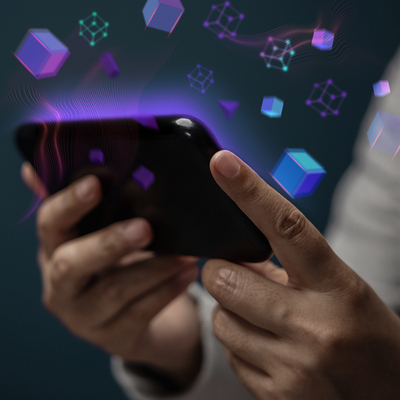
NFT Marketplace Aggregators- The Epicenter of NFT Marketplaces!
The NFT market is not just buzzing but it is booming now with billions of NFTs being traded each day. A wide array of NFTs are listed for sale across platforms and it becomes difficult for NFT enthusiasts to jump from one marketplace to another to keep track of each NFT Drop. To combine different blockchains and different marketplace NFTs at one place, NFT Marketplace Aggregators came into the picture. Let’s Dive in Deep to Explore NFT Marketplace Aggregator! NFT Marketplace Aggregators refer to a platform that offers NFT enthusiasts to seamlessly trade NFT collections from across the platforms eliminating the need to visit multiple NFT Marketplaces. NFT Marketplace Aggregators are platforms that combine the NFT inventories across multiple platforms and list them for sale into a unified interface. This platform offers convenience for buyers to compare the NFT prices and purchase NFTs from various sources on a single platform. Top Three Benefits of NFT Aggregators You Can’t Ignore! A Single Unified Interface:NFT Aggregators offer a unified platform to ensure the convenient buying of NFTs from multiple sources without having to switch between marketplaces. Bulk Purchase: NFT aggregators allow users to make bulk NFT purchases simultaneously instead of buying each NFT individually over different platforms. Enhance Search Efficiency: The NFT Marketplace aggregators enable NFT enthusiasts to browse for NFTs through multiple search options like searching through creator name, description, etc. 3 NFT Marketplace Aggregators You Should Explore this Year! Genie.xyz:The very 1st NFT Marketplace Aggregator that was developed is Genie.xyz. This platform provides a library of NFTs to the users listed on multiple platforms like Opensea, NFTX, NFT20, and LooksRare.Gem.xyz:Gem.xyz is one of the popular NFT Marketplace aggregators offering a shopping cart, flash bot, and whale purchase as the main features. Leveraging these features, the users on Gem.xyz platform stay updated with the latest trends in NFT Marketplace Development. The platform updates the users with the market trends without charging any additional charges and allowing users to generate profits. It lists NFTs from five popular Marketplaces that include, Opensea, X2Y2, LooksRare, and NFTX. Rareboard:Rareboard is another popular NFT Marketplace Aggregators built on BNB Chain. It allows the users to access the NFTs and their prices listed on the rarity dashboard. It has incorporated the top 10 NFT Marketplaces on the BNB chain network. These Marketplaces include NFTKey, BinanceNFT, Galler.io, NFT Trade, etc. Sintryx NFT Marketplace - An aggregated Platform for NFT Marketplace by RWaltz! Sintryx NFT bridges the gap between market participants and brings liquidity to secondary trading. RWaltz developed this aggregated platform to ensure the convenient buying and selling of NFTs across multiple marketplaces. RWaltz is a reliable NFT Marketplace Development company that offers customized solutions based on business requirements. If you are looking to develop an NFT Marketplace Aggregator like Sintryx NFT, click here to explore the portfolio. Schedule a demo with us and get consulted now! Wrap Up Hopefully, the article was a perfect guide for you on NFT Marketplace Aggregators.
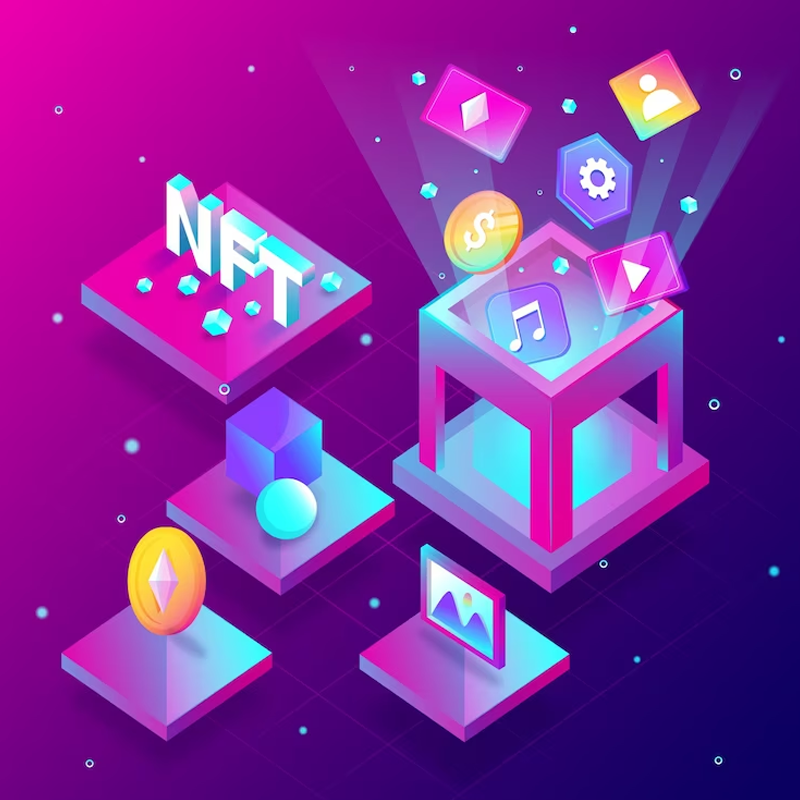
250+ Gaming NFT Ideas to Engage the Users
Non-fungible tokens (NFTs) have exploded in popularity over the last couple of years, especially in the gaming industry. Major gaming companies and indie developers are rushing to incorporate NFTs into games as players seek to truly own unique in-game assets. NFTs represent ownership of digital items like character skins, weapons, real estate parcels, and more. But coming up with fresh gaming NFT ideas that resonate with players requires strategic thinking. In this post, we’ll explore innovative gaming NFT ideas and opportunities to consider.From exclusive collectibles to customized creations, explore fresh ways to reward players and boost engagement through non-fungible tokens Ownership and Scarcity: NFTs grant gamers true ownership of in-game assets, fostering a sense of rarity and exclusivity, which can lead to increased player engagement and value perception. Interoperability and Cross-Game Utility: NFTs can be utilized across multiple games, allowing players to carry their assets and achievements from one game to another, creating a seamless gaming experience. Player-Driven Economies: NFT-enabled gaming platforms empower players to create, buy, and sell in-game assets, fostering player-driven economies that can stimulate engagement and create a sense of entrepreneurship. Gamified Collectibles: Introducing NFT-based collectibles, such as character skins, weapons, and accessories, encourages players to engage in specific activities or challenges, driving gameplay and competition. Exclusive Events and Rewards: NFTs can serve as rewards for completing in-game achievements or participating in special events, incentivizing users to immerse themselves further in the gaming world. Limited Edition Content: Offering limited edition NFTs with unique attributes can drive anticipation and excitement among players, boosting engagement and participation in time-sensitive activities. Collaborative Creation: NFTs enable the collaborative creation of in-game content by players, including custom levels, mods, and virtual real estate, fostering a strong sense of community and shared ownership. Celebrity Partnerships: Partnering with celebrities or influencers to release exclusive NFTs can attract new players and create buzz, expanding the user base and increasing engagement. Real-World Value: The ability to trade NFTs on external marketplaces can attract collectors and investors, adding a layer of real-world value to in-game assets and increasing engagement. Limited-Time Events: Hosting time-limited NFT events, where players can earn or purchase unique assets, can create a sense of urgency and drive consistent user participation. Dynamic Gameplay Mechanics: NFTs can introduce dynamic gameplay mechanics, where the attributes of in-game assets can influence player performance, strategy, and outcomes. Enhanced Social Features: Integrating NFTs with social features, such as gifting or trading assets with friends, can foster a sense of camaraderie and social interaction among players. Player-Centric Monetization: NFTs allow gamers to monetize their skills and time investment by selling valuable assets, providing an additional incentive for engagement and dedication. Localized Events and NFTs: Creating region-specific NFTs or events can cater to the preferences of different player communities, increasing engagement among diverse user groups. Lore and Storytelling: NFTs can be tied to the game's lore and storytelling, enticing players to uncover hidden narratives and explore the game's world in-depth. NFT-Backed Competitions: Hosting competitive events where players wager or stake NFTs can amplify the player engagement, turning gameplay into a high-stakes, immersive experience. Dynamic Crafting Systems: Introducing NFT-based crafting systems, where players combine assets to create unique items, adds a layer of complexity and strategic thinking to the gaming experience. Seasonal and Thematic NFTs: Releasing NFTs that align with seasonal themes or game updates can maintain user interest over time and encourage continuous engagement. Virtual Land Ownership: Implementing NFT-based virtual land ownership can stimulate player creativity and collaboration, driving engagement through user-generated content. In-Game Governance: Allowing NFT holders to participate in decision-making processes regarding game updates or changes can empower players and strengthen their connection to the game. Emergent Gameplay Possibilities: NFTs can unlock emergent gameplay possibilities, where players discover new strategies or interactions through the unique attributes of their assets. Charitable Initiatives: Introducing limited edition NFTs tied to charitable initiatives can not only engage players but also contribute positively to real-world causes. Educational NFTs: Using NFTs to offer educational content, tutorials, or guides can incentivize players to learn and improve their skills, enhancing engagement and retention. Personalized Avatars and Customization: NFTs allow for highly personalized avatars and customization options, encouraging players to express their individuality and engage with the game on a deeper level. Augmented Reality (AR) Integration: Integrating NFTs with AR technology can create unique, interactive experiences that bridge the gap between the virtual and physical worlds, driving user engagement. Player-Generated Challenges: Allowing players to create and share challenges or quests using NFTs can foster a sense of community and competition, encouraging ongoing engagement. Virtual Fashion and Lifestyle: NFTs can introduce virtual fashion and lifestyle elements, such as clothing, accessories, and virtual spaces, allowing players to curate their digital personas and enhancing engagement. Localized NFT Economies: Creating localized NFT economies based on specific regions or cultures can cater to diverse player preferences and amplify engagement within targeted communities. Time-Limited NFT Events: Hosting time-limited NFT events, auctions, or sales can create a sense of urgency and exclusivity, encouraging players to participate actively during specific periods. NFT-Backed Tournaments: Organizing tournaments where NFTs act as rewards or entry tokens can boost competitive engagement and drive participation among skilled players. Integrated Blockchain Mini-Games: Incorporating mini-games or challenges that utilize blockchain technology and NFTs can diversify gameplay and maintain player interest. Dynamic Narrative Choices: NFTs can influence the branching narratives and choices within the game, encouraging players to explore different paths and enhancing replayability. VIP and Loyalty Programs: Rewarding long-term players with exclusive NFTs as part of VIP or loyalty programs can foster a strong sense of dedication and continuous engagement. Dynamic NFT Events: Introducing NFT events that respond to real-world events or trends can create a dynamic and relevant gaming experience that resonates with players. Player-Centric Marketplaces: Implementing NFT marketplaces where players can easily buy, sell, and trade assets can create a vibrant ecosystem that encourages engagement and interactions. NFT Challenges and Quests: Incorporating NFT-based challenges and quests within the game can prompt players to explore different aspects of the game world and interact with diverse content. Live NFT Showcases: Hosting live showcases or events where players can exhibit their rare or unique NFT assets can drive community engagement and create a sense of prestige. NFT-Enhanced Virtual Events: Using NFTs to enhance virtual events, such as in-game concerts or exhibitions, can draw players into immersive experiences and amplify engagement. Player-Generated Content Marketplace: Creating a marketplace where players can sell their self-generated NFT-based content, such as artwork or mods, can incentivize creativity and deepen engagement. Cross-Platform NFT Integration: Enabling NFTs to be seamlessly integrated across different gaming platforms and devices can broaden player engagement and accessibility. NFT-Enabled Achievements: Assigning NFTs as rewards for completing challenging in-game achievements can motivate players to strive for excellence and maintain engagement. Personalized Storylines: NFTs can introduce personalized storylines and interactions based on a player's acquired assets, creating a tailored and immersive gameplay experience. Seasonal NFT Challenges: Offering seasonal NFT challenges or competitions can encourage players to participate actively during specific times, injecting freshness and excitement into the gaming environment. Community-Driven NFT Events: Involving the gaming community in the creation and execution of NFT events can enhance player engagement and foster a sense of ownership. Evolving NFT Mechanics: Implementing NFTs with evolving attributes that change over time or based on player actions can intrigue players and incentivize continuous engagement. NFT Leaderboards and Rankings: Integrating NFT-based leaderboards and rankings can spark healthy competition among players, driving them to improve and engage more deeply with the game. Narrative-Driven NFTs: Designing NFTs with embedded narratives or lore can captivate players, enticing them to explore the game world and uncover hidden stories. NFT-Infused Challenges: Designing challenges or quests that require the use of specific NFT assets can introduce a layer of strategy and decision-making, enhancing player engagement. Time Capsule NFTs: Offering time capsule NFTs that unlock unique content or benefits after a certain period can encourage players to remain engaged over the long term. Interactive NFT Auctions: Hosting interactive NFT auctions within the game can generate excitement, encourage player participation, and create memorable in-game events. Dynamic NFT Ecosystem: Designing an evolving NFT ecosystem with regular updates, additions, and events can ensure a continuous stream of engaging content for players. NFT-Powered Social Features: Enabling players to showcase their NFT assets in social spaces within the game can foster a sense of community and create opportunities for interaction. Emerging Gameplay Strategies: NFTs can introduce emergent gameplay strategies that require players to adapt and evolve their tactics based on the attributes of their assets. NFT-Driven Lore Expansion: Using NFTs to expand the game's lore and world-building can pique player curiosity and prompt them to delve deeper into the game's narrative. NFT-Based Time Trials: Introducing NFT-based time trials or challenges where players use specific assets to compete for records can create an engaging competitive environment. Localized NFT Lore: Creating region-specific NFTs with unique lore and significance can resonate with players from different cultures and backgrounds, driving engagement. Limited Edition NFT Quests: Designing limited edition NFT quests with unique rewards can create a sense of urgency and anticipation, motivating players to participate actively. NFT-Enhanced Mini-Games: Introducing mini-games or activities that utilize NFT assets can diversify gameplay and provide players with new avenues for engagement. Integrated NFT Storytelling: Weaving NFT-based storytelling elements into the game's main narrative can captivate players and encourage them to explore the game's lore. Exclusive NFT Partnerships: Collaborating with renowned artists or brands to release exclusive NFTs can attract attention, elevate the game's status, and drive engagement. NFT-Infused Competitions: Hosting NFT-powered competitions, where players wager or stake assets, can elevate the competitive intensity and engagement within the gaming community. Dynamic NFT Market Dynamics: Implementing NFT market dynamics that mirror real-world supply and demand can create an authentic and engaging trading experience for players. Localized NFT Events: Tailoring NFT events to specific geographic regions or cultural celebrations can foster a sense of inclusivity and encourage participation. NFT-Driven Puzzles: Designing puzzles or mysteries that require the use of NFT assets to unlock solutions can engage players' problem-solving skills and intrigue. Time-Limited NFT Challenges: Introducing time-limited NFT challenges that align with special occasions or milestones can generate excitement and attract player participation. NFT Story Branching: NFTs can impact the branching paths and outcomes of the game's narrative, inspiring players to explore different choices and replicability. NFT Social Competitions: Organizing social competitions where players showcase their NFT assets in creative ways can foster community engagement and interaction. Interactive NFT Cosmetics: Offering interactive NFT cosmetics that respond to player actions or emotions can create a unique and captivating visual experience. NFT-Powered Leaderboards: Integrating NFT-powered leaderboards that display rare or powerful assets can motivate players to strive for excellence and showcase their achievements. Dynamic NFT Trading: Introducing dynamic trading mechanics for NFT assets, such as auctions, bids, or peer-to-peer exchanges, can inject excitement and player interaction. Collaborative NFT Quests: Designing collaborative quests that require players to pool their NFT assets and skills can foster teamwork and encourage engagement. NFT-Enabled Personalization: Allowing players to personalize their gaming experience using NFT assets, such as customizable environments or avatars, can deepen engagement. Localized NFT Challenges: Creating localized NFT challenges that resonate with specific player demographics can drive engagement and cater to diverse interests. Dynamic NFT Lore Expansion: Releasing periodic NFTs that expand the game's lore and backstory can captivate players and prompt them to delve into the narrative. NFT-Enhanced Roleplaying: Using NFTs to enhance roleplaying experiences, such as unique character traits or abilities, can immerse players in their chosen roles and enhance engagement. Real-Time NFT Events: Hosting real-time NFT events or auctions that occur within the game environment can create a sense of urgency and encourage immediate participation. NFT-Gated Content: Introducing NFT-gated content or areas within the game that require specific assets for access can incentivize players to collect and engage with NFTs. NFT-Backed Social Challenges: Launching NFT-backed social challenges or trends within the gaming community can foster player engagement and spark creativity. NFT-Enhanced Exploration: Using NFTs to unlock hidden or exclusive areas within the game world can motivate players to explore and interact with different environments. Integrated NFT Rewards: Offering NFT rewards for completing in-game tasks or milestones can incentivize players to progress and engage with the game's mechanics. Emerging Competitive Strategies: NFTs can introduce emergent competitive strategies that require players to adapt their tactics based on evolving asset attributes. Localized NFT Economy Events: Hosting localized NFT economy events, such as regional marketplaces or auctions, can create tailored engagement opportunities. NFT-Infused Character Progression: Incorporating NFT assets into character progression systems can offer players unique growth paths and incentivize continuous engagement. Interactive NFT Questlines: Designing questlines where players must use specific NFT assets to uncover secrets or solve mysteries can engage players' curiosity and problem-solving skills. NFT Trading Competitions: Organizing trading competitions where players compete to build the most valuable NFT portfolio can foster engagement and strategic thinking. Dynamic NFT Events: Hosting dynamic NFT events that respond to player actions or achievements can create an immersive and rewarding gaming experience. NFT-Enhanced Crafting: Integrating NFTs into crafting systems, where specific assets yield unique item combinations, can encourage experimentation and engagement. NFT-Driven Exploration Challenges: Launching NFT-driven exploration challenges that encourage players to discover hidden treasures or locations can stimulate engagement. Localized NFT Lore Events: Creating NFT lore events that cater to different player communities or regions can spark interest and encourage diverse engagement. NFT-Backed Puzzles: Designing intricate puzzles that require the use of NFT assets to unlock solutions can engage players' critical thinking and problem-solving abilities. Time-Limited NFT Quests: Introducing time-limited NFT quests with exclusive rewards can generate a sense of urgency and motivate players to engage promptly. NFT-Powered Social Showcases: Allowing players to showcase their NFT assets in social spaces within the game can foster community engagement and interaction. Dynamic NFT Auctions: Hosting dynamic NFT auctions within the game environment can create excitement, encourage participation, and drive in-game events. Localized NFT Challenges: Designing challenges that cater to specific player demographics or cultural preferences can enhance engagement and inclusivity. NFT-Enhanced Progression: Using NFTs to enhance character progression systems, such as unlocking unique abilities or attributes, can incentivize ongoing engagement. Emergent NFT Strategies: NFTs can introduce emergent strategies that encourage players to adapt their tactics based on evolving asset attributes and interactions. Localized NFT Economy: Creating localized NFT economies or marketplaces that reflect regional preferences can foster engagement within targeted player communities. NFT-Infused Exploration: Using NFTs to unlock hidden areas or storylines within the game can motivate players to explore and engage with the game's content. Integrated NFT Competitions: Organizing competitions where players use NFT assets to compete for records or achievements can elevate engagement and competition. NFT-Enhanced Crafting Challenges: Introducing NFT-based crafting challenges that require specific assets to create unique items can stimulate engagement and creativity. Dynamic NFT Questlines: Designing questlines that dynamically evolve based on NFT assets used can create personalized and engaging narrative experiences. NFT-Backed Community Events: Launching NFT-backed events or competitions that encourage player creativity and interaction can enhance community engagement. Localized NFT Exploration: Creating NFT-based exploration challenges that resonate with specific player demographics or cultures can drive engagement. NFT-Powered Cosmetics: Using NFTs to offer interactive cosmetics that respond to player actions or emotions can create captivating visual experiences. Dynamic NFT Trading Mechanics: Implementing dynamic trading mechanics for NFT assets, such as live auctions or evolving marketplaces, can enhance engagement. Collaborative NFT Challenges: Designing challenges that require players to collaborate using NFT assets can foster teamwork and strengthen player engagement. Time-Limited NFT Rewards: Introducing time-limited NFT rewards for achieving specific milestones or in-game accomplishments can incentivize engagement. Interactive NFT Auctions: Hosting interactive NFT auctions or bidding events can generate excitement, encourage participation, and create memorable experiences. Localized NFT Events: Designing NFT events that align with local festivities or cultural celebrations can foster player engagement and inclusivity. NFT-Driven Puzzles: Incorporating NFT assets into in-game puzzles or mysteries can intrigue players and encourage exploration and critical thinking. Emergent NFT Storylines: NFTs can influence the branching paths and outcomes of the game's narrative, offering players dynamic storytelling experiences. NFT Social Competitions: Organizing social competitions or challenges where players showcase their NFT assets creatively can enhance community engagement. Integrated NFT Cosmetics: Offering NFT cosmetics that players can customize and interact with can enhance the visual experience and drive engagement. Localized NFT Challenges: Creating NFT challenges that cater to specific player preferences or regional interests can stimulate engagement within targeted communities. NFT-Enhanced Exploration: Using NFTs to unlock hidden or exclusive areas within the game world can encourage players to explore and engage with diverse environments. Player-Centric NFT Rewards: Offering NFT rewards for player-generated content, such as fan art or mods, can foster engagement and creative contributions. Dynamic NFT Events: Hosting dynamic NFT events or auctions that respond to player actions can create a sense of real-time immersion and engagement. NFT-Backed Personalization: Using NFT assets to personalize in-game avatars, environments, or items can deepen player engagement and customization. Emerging NFT Strategies: NFTs can introduce emerging competitive strategies where players adapt tactics based on evolving asset attributes. Localized NFT Economy: Implementing localized NFT economies or marketplaces that cater to specific player communities can encourage engagement. NFT-Driven Exploration: Creating NFT-driven exploration challenges that motivate players to discover hidden treasures or secrets can enhance engagement. NFT-Powered Puzzles: Incorporating NFT assets into puzzles or enigmas that require their use can stimulate player curiosity and problem-solving skills. NFT Trading Competitions: Organizing NFT trading competitions where players build valuable portfolios can foster engagement and strategic thinking. Dynamic NFT Events: Hosting dynamic NFT events that adapt to player actions or achievements can create an immersive and rewarding gaming experience. Localized NFT Lore Events: Creating NFT lore events tied to specific cultures or regions can resonate with players and encourage exploration. NFT-Enhanced Roleplaying: Using NFTs to enhance roleplaying experiences, such as unique character traits or abilities, can immerse players in their chosen roles. Real-Time NFT Events: Hosting real-time NFT events or auctions within the game world can create urgency and encourage immediate player participation. NFT-Gated Content: Introducing NFT-gated content or areas within the game can incentivize players to collect assets and engage with the game. NFT-Backed Social Challenges: Launching NFT-backed social challenges or trends can encourage community engagement and spark creative interactions. Interactive NFT Questlines: Designing questlines where players use specific NFT assets to unlock secrets or solve mysteries can engage curiosity. Time-Limited NFT Quests: Introducing time-limited NFT quests with unique rewards can generate urgency and motivate players to engage promptly. NFT-Driven Exploration Challenges: Launching NFT-driven exploration challenges that motivate players to uncover hidden treasures can stimulate engagement. Localized NFT Lore Events: Creating NFT lore events that cater to different player communities or regions can encourage exploration and engagement. NFT-Backed Puzzles: Designing intricate puzzles that require the use of NFT assets can engage players' critical thinking and problem-solving abilities. Emergent Competitive Strategies: NFTs can introduce emergent competitive strategies where players adapt their tactics based on evolving asset attributes. Localized NFT Economy: Creating localized NFT economies or marketplaces that reflect regional preferences can foster engagement within targeted communities. NFT-Infused Exploration: Using NFTs to unlock hidden or exclusive areas within the game can motivate players to explore and engage with the game world. Integrated NFT Rewards: Offering NFT rewards for completing in-game tasks can incentivize players to progress and engage with the game's mechanics. Player-Driven NFT Economy: Allowing players to create and sell NFT-based content, such as custom skins or mods, can foster engagement and entrepreneurship. Dynamic NFT Storytelling: Designing narrative arcs that dynamically evolve based on player interactions with NFT assets can create engaging storylines. Localized NFT Challenges: Launching NFT challenges tailored to specific player communities or cultural events can resonate and encourage engagement. NFT-Enhanced Role-play: Using NFTs to enhance roleplaying experiences, such as unique character traits or dialogue options, can immerse players further. Real-Time NFT Events: Hosting real-time NFT events or auctions that occur within the game environment can create excitement and encourage participation. Integrated NFT Collectibles: Incorporating NFT-based collectibles, such as character skins or emotes, can drive engagement and offer players customization options. Localized NFT Economy: Creating localized NFT economies or marketplaces can cater to player preferences and encourage engagement within specific regions. NFT-Infused Challenges: Designing challenges that require specific NFT assets to complete can encourage players to strategically use their collected items. Dynamic NFT Lore Expansion: Introducing NFT lore events or additions that expand the game's narrative can intrigue players and foster deeper engagement. Player-Generated NFT Content: Allowing players to create and trade NFT-based content, such as user-generated levels or items, can boost engagement. Localized NFT Quests: Designing localized NFT quests that reflect regional interests or traditions can resonate with players and stimulate engagement. NFT-Enhanced Exploration: Using NFTs to unlock hidden secrets or unique interactions within the game can motivate players to explore and engage. Emergent NFT Strategies: NFTs can introduce emergent competitive strategies where players adapt tactics based on evolving asset attributes. NFT-Backed Social Challenges: Organizing NFT-backed social challenges that encourage player interaction and creativity can enhance community engagement. Integrated NFT Cosmetics: Offering NFT cosmetics that players can customize and interact with can enhance the visual experience and drive engagement. Localized NFT Challenges: Launching NFT challenges tied to local events or cultural celebrations can resonate with players and encourage participation. Dynamic NFT Trading Mechanics: Implementing dynamic trading mechanics for NFT assets, such as live auctions, can enhance engagement and interaction. Collaborative NFT Quests: Designing quests that require players to collaborate using NFT assets can foster teamwork and encourage engagement. Time-Limited NFT Rewards: Introducing time-limited NFT rewards for achieving specific milestones can incentivize engagement and create excitement. Interactive NFT Auctions: Hosting interactive NFT auctions or bidding events can generate excitement, encourage participation, and create memorable experiences. Localized NFT Events: Designing NFT events that align with local festivities or cultural traditions can foster player engagement and inclusivity. NFT-Driven Puzzles: Incorporating NFT assets into in-game puzzles or enigmas can intrigue players and encourage exploration and problem-solving. Emergent NFT Storylines: NFTs can influence the branching paths and outcomes of the game's narrative, offering players dynamic storytelling experiences. NFT Social Competitions: Organizing social competitions or challenges where players showcase their NFT assets creatively can enhance community engagement. Integrated NFT Cosmetics: Offering NFT cosmetics that players can customize and interact with can enhance the visual experience and drive engagement. Localized NFT Challenges: Launching NFT challenges tied to local events or cultural celebrations can resonate with players and encourage participation. Dynamic NFT Trading Mechanics: Implementing dynamic trading mechanics for NFT assets, such as live auctions, can enhance engagement and interaction. Collaborative NFT Quests: Designing quests that require players to collaborate using NFT assets can foster teamwork and encourage engagement. Time-Limited NFT Rewards: Introducing time-limited NFT rewards for achieving specific milestones can incentivize engagement and create excitement. Interactive NFT Auctions: Hosting interactive NFT auctions or bidding events can generate excitement, encourage participation, and create memorable experiences. Localized NFT Events: Designing NFT events that align with local festivities or cultural traditions can foster player engagement and inclusivity. NFT-Driven Puzzles: Incorporating NFT assets into in-game puzzles or enigmas can intrigue players and encourage exploration and problem-solving. Emergent NFT Storylines: NFTs can influence the branching paths and outcomes of the game's narrative, offering players dynamic storytelling experiences. NFT Social Competitions: Organizing social competitions or challenges where players showcase their NFT assets creatively can enhance community engagement. Integrated NFT Cosmetics: Offering NFT cosmetics that players can customize and interact with can enhance the visual experience and drive engagement. Localized NFT Challenges: Launching NFT challenges tied to local events or cultural celebrations can resonate with players and encourage participation. Dynamic NFT Trading Mechanics: Implementing dynamic trading mechanics for NFT assets, such as live auctions, can enhance engagement and interaction. Collaborative NFT Quests: Designing quests that require players to collaborate using NFT assets can foster teamwork and encourage engagement. Time-Limited NFT Rewards: Introducing time-limited NFT rewards for achieving specific milestones can incentivize engagement and create excitement. Interactive NFT Auctions: Hosting interactive NFT auctions or bidding events can generate excitement, encourage participation, and create memorable experiences. Localized NFT Events: Designing NFT events that align with local festivities or cultural traditions can foster player engagement and inclusivity. NFT-Driven Puzzles: Incorporating NFT assets into in-game puzzles or enigmas can intrigue players and encourage exploration and problem-solving. Emergent NFT Storylines: NFTs can influence the branching paths and outcomes of the game's narrative, offering players dynamic storytelling experiences. NFT Social Competitions: Organizing social competitions or challenges where players showcase their NFT assets creatively can enhance community engagement. Localized NFT Challenges: Launching NFT challenges tied to local events or cultural celebrations can resonate with players and encourage participation. Dynamic NFT Trading Mechanics: Implementing dynamic trading mechanics for NFT assets, such as live auctions, can enhance engagement and interaction. Collaborative NFT Quests: Designing quests that require players to collaborate using NFT assets can foster teamwork and encourage engagement. Time-Limited NFT Rewards: Introducing time-limited NFT rewards for achieving specific milestones can incentivize engagement and create excitement. Interactive NFT Auctions: Hosting interactive NFT auctions or bidding events can generate excitement, encourage participation, and create memorable experiences. Localized NFT Events: Designing NFT events that align with local festivities or cultural traditions can foster player engagement and inclusivity. NFT-Driven Puzzles: Incorporating NFT assets into in-game puzzles or enigmas can intrigue players and encourage exploration and problem-solving. Emergent NFT Storylines: NFTs can influence the branching paths and outcomes of the game's narrative, offering players dynamic storytelling experiences. NFT Social Competitions: Organizing social competitions or challenges where players showcase their NFT assets creatively can enhance community engagement. Integrated NFT Cosmetics: Offering NFT cosmetics that players can customize and interact with can enhance the visual experience and drive engagement. Localized NFT Challenges: Launching NFT challenges tied to local events or cultural celebrations can resonate with players and encourage participation. Dynamic NFT Trading Mechanics: Implementing dynamic trading mechanics for NFT assets, such as live auctions, can enhance engagement and interaction. Collaborative NFT Quests: Designing quests that require players to collaborate using NFT assets can foster teamwork and encourage engagement. Time-Limited NFT Rewards: Introducing time-limited NFT rewards for achieving specific milestones can incentivize engagement and create excitement. Interactive NFT Auctions: Hosting interactive NFT auctions or bidding events can generate excitement, encourage participation, and create memorable experiences. Localized NFT Events: Designing NFT events that align with local festivities or cultural traditions can foster player engagement and inclusivity. NFT-Driven Puzzles: Incorporating NFT assets into in-game puzzles or enigmas can intrigue players and encourage exploration and problem-solving. Emergent NFT Storylines: NFTs can influence the branching paths and outcomes of the game's narrative, offering players dynamic storytelling experiences. NFT Social Competitions: Organizing social competitions or challenges where players showcase their NFT assets creatively can enhance community engagement. Localized NFT Challenges: Launching NFT challenges tied to local events or cultural celebrations can resonate with players and encourage participation. Dynamic NFT Trading Mechanics: Implementing dynamic trading mechanics for NFT assets, such as live auctions, can enhance engagement and interaction. Collaborative NFT Quests: Designing quests that require players to collaborate using NFT assets can foster teamwork and encourage engagement. Time-Limited NFT Rewards: Introducing time-limited NFT rewards for achieving specific milestones can incentivize engagement and create excitement. Interactive NFT Auctions: Hosting interactive NFT auctions or bidding events can generate excitement, encourage participation, and create memorable experiences. Localized NFT Events: Designing NFT events that align with local festivities or cultural traditions can foster player engagement and inclusivity. NFT-Driven Puzzles: Incorporating NFT assets into in-game puzzles or enigmas can intrigue players and encourage exploration and problem-solving. Emergent NFT Storylines: NFTs can influence the branching paths and outcomes of the game's narrative, offering players dynamic storytelling experiences. NFT Social Competitions: Organizing social competitions or challenges where players showcase their NFT assets creatively can enhance community engagement Localized NFT Challenges: Launching NFT challenges tied to local events or cultural celebrations can resonate with players and encourage participation. Dynamic NFT Trading Mechanics: Implementing dynamic trading mechanics for NFT assets, such as live auctions, can enhance engagement and interaction. Collaborative NFT Quests: Designing quests that require players to collaborate using NFT assets can foster teamwork and encourage engagement. Time-Limited NFT Rewards: Introducing time-limited NFT rewards for achieving specific milestones can incentivize engagement and create excitement. Interactive NFT Auctions: Hosting interactive NFT auctions or bidding events can generate excitement, encourage participation, and create memorable experiences. Localized NFT Events: Designing NFT events that align with local festivities or cultural traditions can foster player engagement and inclusivity. NFT-Driven Puzzles: Incorporating NFT assets into in-game puzzles or enigmas can intrigue players and encourage exploration and problem-solving. Emergent NFT Storylines: NFTs can influence the branching paths and outcomes of the game's narrative, offering players dynamic storytelling experiences. NFT Social Competitions: Organizing social competitions or challenges where players showcase their NFT assets creatively can enhance community engagement. Localized NFT Challenges: Launching NFT challenges tied to local events or cultural celebrations can resonate with players and encourage participation. Dynamic NFT Trading Mechanics: Implementing dynamic trading mechanics for NFT assets, such as live auctions, can enhance engagement and interaction. Collaborative NFT Quests: Designing quests that require players to collaborate using NFT assets can foster teamwork and encourage engagement. Time-Limited NFT Rewards: Introducing time-limited NFT rewards for achieving specific milestones can incentivize engagement and create excitement. Interactive NFT Auctions: Hosting interactive NFT auctions or bidding events can generate excitement, encourage participation, and create memorable experiences. Localized NFT Events: Designing NFT events that align with local festivities or cultural traditions can foster player engagement and inclusivity. NFT-Driven Puzzles: Incorporating NFT assets into in-game puzzles or enigmas can intrigue players and encourage exploration and problem-solving. Emergent NFT Storylines: NFTs can influence the branching paths and outcomes of the game's narrative, offering players dynamic storytelling experiences. NFT Social Competitions: Organizing social competitions or challenges where players showcase their NFT assets creatively can enhance community engagement. Localized NFT Challenges: Launching NFT challenges tied to local events or cultural celebrations can resonate with players and encourage participation. Dynamic NFT Trading Mechanics: Implementing dynamic trading mechanics for NFT assets, such as live auctions, can enhance engagement and interaction. Collaborative NFT Quests: Designing quests that require players to collaborate using NFT assets can foster teamwork and encourage engagement. Time-Limited NFT Rewards: Introducing time-limited NFT rewards for achieving specific milestones can incentivize engagement and create excitement. Interactive NFT Auctions: Hosting interactive NFT auctions or bidding events can generate excitement, encourage participation, and create memorable experiences. Localized NFT Events: Designing NFT events that align with local festivities or cultural traditions can foster player engagement and inclusivity. NFT-Driven Puzzles: Incorporating NFT assets into in-game puzzles or enigmas can intrigue players and encourage exploration and problem-solving. Emergent NFT Storylines: NFTs can influence the branching paths and outcomes of the game's narrative, offering players dynamic storytelling experiences. NFT Social Competitions: Organizing social competitions or challenges where players showcase their NFT assets creatively can enhance community engagement. Localized NFT Challenges: Launching NFT challenges tied to local events or cultural celebrations can resonate with players and encourage participation. Dynamic NFT Trading Mechanics: Implementing dynamic trading mechanics for NFT assets, such as live auctions, can enhance engagement and interaction. Collaborative NFT Quests: Designing quests that require players to collaborate using NFT assets can foster teamwork and encourage engagement. Time-Limited NFT Rewards: Introducing time-limited NFT rewards for achieving specific milestones can incentivize engagement and create excitement. Interactive NFT Auctions: Hosting interactive NFT auctions or bidding events can generate excitement, encourage participation, and create memorable experiences. Localized NFT Events: Designing NFT events that align with local festivities or cultural traditions can foster player engagement and inclusivity. NFT-Driven Puzzles: Incorporating NFT assets into in-game puzzles or enigmas can intrigue players and encourage exploration and problem-solving. Emergent NFT Storylines: NFTs can influence the branching paths and outcomes of the game's narrative, offering players dynamic storytelling experiences. NFT Social Competitions: Organizing social competitions or challenges where players showcase their NFT assets creatively can enhance community engagement. Localized NFT Challenges: Launching NFT challenges tied to local events or cultural celebrations can resonate with players and encourage participation. Dynamic NFT Trading Mechanics: Implementing dynamic trading mechanics for NFT assets, such as live auctions, can enhance engagement and interaction. Collaborative NFT Quests: Designing quests that require players to collaborate using NFT assets can foster teamwork and encourage engagement. Time-Limited NFT Rewards: Introducing time-limited NFT rewards for achieving specific milestones can incentivize engagement and create excitement. Interactive NFT Auctions: Hosting interactive NFT auctions or bidding events can generate excitement, encourage participation, and create memorable experiences. Localized NFT Events: Designing NFT events that align with local festivities or cultural traditions can foster player engagement and inclusivity. NFT-Driven Puzzles: Incorporating NFT assets into in-game puzzles or enigmas can intrigue players and encourage exploration and problem-solving. Emergent NFT Storylines: NFTs can influence the branching paths and outcomes of the game's narrative, offering players dynamic storytelling experiences. NFT Social Competitions: Organizing social competitions or challenges where players showcase their NFT assets creatively can enhance community engagement. Localized NFT Challenges: Launching NFT challenges tied to local events or cultural celebrations can resonate with players and encourage participation. Dynamic NFT Trading Mechanics: Implementing dynamic trading mechanics for NFT assets, such as live auctions, can enhance engagement and interaction. Collaborative NFT Quests: Designing quests that require players to collaborate using NFT assets can foster teamwork and encourage engagement. Time-Limited NFT Rewards: Introducing time-limited NFT rewards for achieving specific milestones can incentivize engagement and create excitement. Interactive NFT Auctions: Hosting interactive NFT auctions or bidding events can generate excitement, encourage participation, and create memorable experiences.NFTs are empowering the next generation of gaming by enabling true digital asset ownership and trading. Players crave opportunities to customize and invest in their gaming experience. By offering unique gaming NFT ideas that provide value, utility, and scarcity, game developers can drive engagement and revenue. However, launching compelling gaming NFTs requires extensive blockchain expertise. Partnering with an experienced NFT development company providing end-to-end NFT marketplace development services is key. With the right gaming NFT strategy, developers can dramatically enhance player enjoyment and loyalty. Contact a top NFT development services provider like RWaltz today to bring your gaming NFT ideas to life.If you are willing to develop the Gaming NFT Marketplace, then RWaltz is here to guide you for end-to-end platform development. RWaltz has good experience in NFT Marketplace Development Services. Feel free to reach out for an on-the-house consultation.
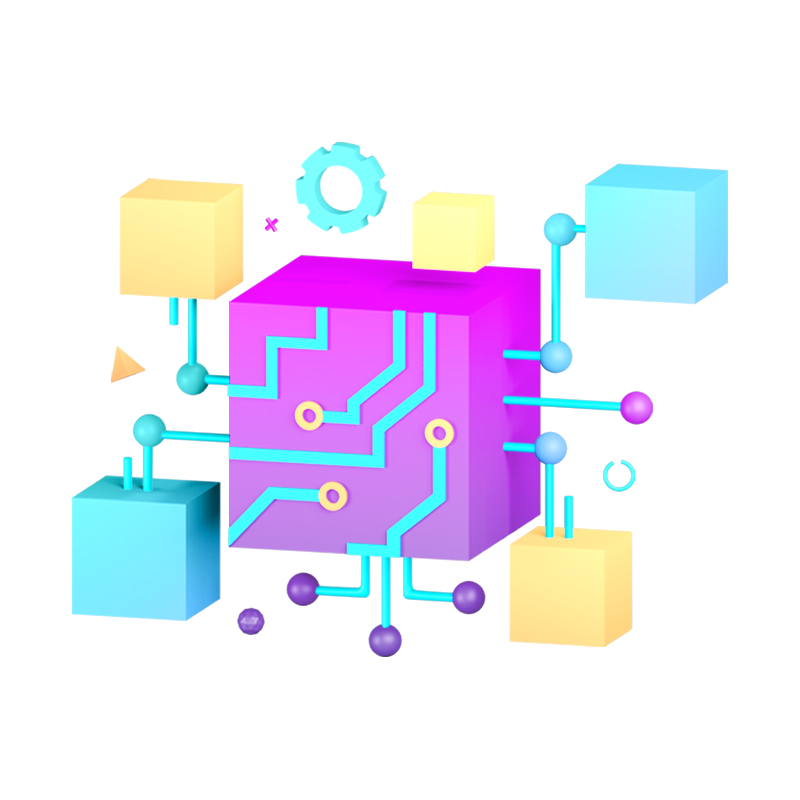
The Benefits of Fractional NFTs
Non-fungible tokens (NFTs) have exploded in popularity over the past few years. From digital art and collectibles to virtual real estate and gaming assets, NFTs are shaking up multiple industries. However, the high prices of desirable NFTs put them out of reach for many people. This is where fractional NFTs come in.Fractional NFTs allow people to own a portion of an NFT, making them more accessible and opening up new opportunities. In this blog post, we’ll explore what fractional NFTs are, their use cases, and the benefits they offer compared to whole NFTs.What are Fractional NFTs?A fractional NFT represents partial ownership of an NFT. Let's say there is a rare CryptoPunk NFT worth $100,000. This is far too expensive for most people to afford.With fractional NFTs, that single CryptoPunk can be divided into smaller pieces, like 100 shares worth $1,000 each. Now, 100 different people can each own 1/100 of the CryptoPunk NFT.So in summary: Fractional NFTs split a single NFT into multiple shares or tokens Each fractional token represents partial ownership of the underlying NFT Owners of fractions share rights to the NFT based on the percentage they ownThis opens up NFT investing and collecting to more people by reducing the buy-in cost.What is an Example of a Fractional NFT?One of the most well-known fractional NFT platforms is Fractional. art.Here's an example of how it works: An artist mints an NFT of their artwork called "Golden Gate Bridge" The NFT is listed on Fractional. art for $100 Fractional. art programmatically splits the NFT into 100 fractions each worth $1 Collectors can buy the fractional tokens on the platform with a minimum purchase of $1 Ownership and rights to the underlying NFT are divided based on the number of fractions each collector holdsSo instead of one person owning the "Golden Gate Bridge" NFT for $100, now 100 people can own a piece of it for just $1 each. This makes the artwork much more accessible.Many other fractional NFT platforms work on similar principles, slicing up digital assets into more affordable pieces.What is the Use Case of NFT Real Estate?One of the most promising use cases for fractional NFTs is virtual real estate. Full virtual land NFTs can be extremely expensive, with premium plots going for hundreds or even millions of dollars.Fractional real estate NFTs allow investors to buy into coveted areas like Metaverse boroughs or virtual world parcels at a lower cost. Even owning 1% of a highly-valued piece of virtual land could be lucrative as the metaverse grows.For example, Republic Realm bought a virtual Atari gaming world called Atari Island in Decentraland for $900,000. They fractionalized it into parcels, with the cheapest plot costing around $20. This allowed over 1,600 individual investors to get a piece of the valuable metaverse land.Virtual real estate is still speculative, but fractional NFTs make it possible for more people to get exposure to this emerging digital asset class. The fractions can be traded freely, creating secondary market opportunities.What is a Fractionalized NFT?Fractionalized NFTs and fractional NFTs refer to the same concept - splitting an NFT into smaller ownership shares.Some key points about fractionalized NFTs: The fractions act as ERC-20 tokens on Ethereum, while the underlying NFT is an ERC-721 token The fractions represent ownership rights and access to the original NFT based on the percentage owned Fractionalized NFTs allow shared ownership of NFTs without having to split the asset itself On-chain standards like ERC-1155 (multi-token standard) enable NFT fractions functionalityFor example, fractionalized CryptoPunks are ERC-20 tokens that represent partial ownership of CryptoPunk NFTs. Each fraction tracks ownership of the punk graphic, commercial rights, and the ability to display it.Fractionalizing creates smaller bite-sized tokens rooted in scarcer assets like top NFT collections, metaverse land, and more.What is an Example of a Fractional Share?Fractional shares are a traditional finance concept similar to fractional NFT ownership.With stocks, fractional shares represent owning part of a single share of stock.For example: Company XYZ is trading at $500 per share An investor buys 0.5 fractional shares for $250 They now own half of one full $500 share The investor gets dividend payments based on owning 50% of a shareFractional stock programs from brokerages like Robinhood, SoFi, and Charles Schwabb increase equity access for small investors. Someone with just $100 can own slivers of expensive stocks like Amazon.Similarly, fractional NFTs split expensive digital assets into accessible bite-sized interests. Owning 0.1 of a rare NFT can be easier than affording a whole one.Both fractional shares and NFTs benefit smaller investors by removing high entry barriers. Fractional ownership is a powerful concept that's expanding from stocks to alternative assets.What is an Example of Fractional?Here are some common examples of fractional ownership and assets: Fractional real estate - own part of a property through crowdfunding Fractional art - own sections of a large piece of art Fractional sports cards - own fractional interests in rare collectibles Fractional stock shares - own portions of full shares Fractional NFTs - own percentages of NFTs Timeshares - shared ownership of vacation properties Fractional yacht ownership - co-own and share yachts Fractional private jets - own hours on a private jetAnything scarce and expensive can potentially be fractionalized. This makes ownership more flexible, accessible, and liquid. Instead of one person owning something outright, fractions enable shared ownership.Benefits of Fractional NFTsNow that we've covered the fractional NFT basics, let's dig into the unique advantages they offer compared to whole NFTs:More Affordable Entry PointThe number one benefit of fractional NFTs is reduced cost. As we saw earlier, dividing a $100,000 NFT into 1,000 $100 fractions drastically lowers the buy-in price.Affordability opens up investing and collecting opportunities to more individuals. Whole NFTs with high price tags can exclude many from participating.Fractional NFTs have no minimum investment amount. Platforms let people own fractions starting at just a few dollars. This is perfect for small investors and collectors.Access to Rare and Elite NFTsAnother major perk is accessibility to rare blue chip NFTs. Items like Bored Apes and CryptoPunks are attainable only for wealthy crypto holders. Their prices can run into the millions!With fractionalization, anyone can own a piece of elite NFTs. Every day investors couldn't dream of buying a whole $200k CryptoPunk. But snagging a 0.5% fraction is possible and offers exposure to a top brand.Platforms focusing on blue-chip NFT fractions give broader access to sought-after digital assets. The ability to own fractions of rare collectibles adds more diversity to portfolios.Greater LiquidityFractional NFTs tend to be more liquid than whole NFTs. It's easier finding buyers for smaller $50 or $100 fractions than $50k+ full NFTs.Lower transaction costs also improve liquidity. Trading a $100 fraction triggers much lower gas fees than transferring an entire NFT.With fractional real estate NFTs, for example, investors can cash out of individual parcels while keeping ownership in larger metaverse properties. This piecemeal liquidity isn't possible when holding full virtual land plots.Overall, the bite-sized and affordable nature of fractional NFTs attracts more users, buyers, and sellers. This results in more active secondary markets compared to many whole NFTs.Shared Ownership ExperienceOwning fractionals creates a shared experience around coveted NFTs. Instead of a single whale owning an asset, a community of holders share rights.Fractional platforms often have social features that let fraction holders chat, collaborate, and jointly manage assets. Shared custody can make owning NFTs more fun and engaging.For real-world collectibles like cars or watches, fractionalization enables new social dynamics. Small groups can co-own an asset and coordinate sharing it.Shared interests strengthen communities around valuable NFTs and digital goods. This communal aspect is unique to fractionals.Potential for Investment GainsAlthough risky and speculative, fractional NFTs offer investment upside potential. If the value of the underlying NFT rises, the increased demand applies to all fractions.Let's say you own 1% of a fractionalized Bored Ape currently valued at $300k. If that Bored Ape later sells for $500k, your 1% stake price effectively doubles as well.Despite just owning a sliver, your fractional interest gains value aligned with the NFT itself. This turns fractions into leverageable plays on rising blue chip prices.Governance RightsMost fractional NFT platforms grant governance rights proportional to the percentage owned. Major decisions about the underlying NFT are put to a fractional holder vote.For example, owners of a fractionalized metaverse parcel could vote on whether to develop virtual buildings on the land. This ability to weigh in on asset use cases isn't possible when owning tiny slivers of stocks.Allowing fractional owners to vote, make proposals, and share management decisions helps engage the community. It also reduces centralized control by fractional platforms.Overall - More Participation in Web3At a high level, fractional NFTs promote wider participation in web3 and decentralized ownership models. By lowering buy-in costs, fractionalization makes the blockchain more inclusive.With whole NFTs and many tokens, wealth tends to concentrate among a few early movers and crypto whales. Fractionals enable a more distributed user base to benefit from digital asset growth.For creators, fractional NFTs unlock new direct-to-consumer revenue streams. Fans can directly support artists and causes by buying affordable tokenized creations.Widely available fractional NFT investing and collecting could be a game changer for mass Web3 adoption.Evaluating Fractional NFT PlatformsAs fractional NFTs gain traction, more platforms are launching to allow minting and trading fractions. Here are some key factors to evaluate:Security - Does the platform use leading security and custody solutions?What measures prevent fractional scams? Team - The team's blockchain expertise and track record with asset fractionalization. Underlying Asset Quality - Top platforms secure rare, sought-after NFTs and virtual lands for fractionalization. Community Trust - Strong support and usage from collectors, metaverse enthusiasts, and NFT influencers. Ease of Use - Smooth onboarding, accessible trading, and intuitive user experience even for crypto newcomers. Social Features - Ways to engage with other fraction holders like forums and collaborative management. Fees - Fractional platforms should charge reasonable fees for minting, transactions, and other services. Technical Implementation - Ideally utilizes standards like ERC-20, ERC-721, and ERC-1155 to integrate well across web3 apps.The fractional NFT space is still young and evolving. But picking trusted platforms with strong technical chops and community ties is key, like with any crypto sector.ConclusionFractional NFTs expand access and open up opportunities in Web3. By splitting expensive blue chip NFTs into more attainable pieces, fractionals enable broader participation. While risky as a speculative asset class, fractional NFTs allow smaller investors to gain exposure to rare digital goods.We've only scratched the surface of use cases like fractional virtual real estate and collectibles. New metaverse and NFT projects can consider fractionalization to drive consumer adoption. Overall, fractional ownership models have the potential to make Web3 more inclusive.Consider adding fractional NFTs as a small portion of your crypto portfolio. Shop for deals, track promising collections and join vibrant communities co-owning coveted digital assets. Just like their whole counterparts, fractional NFTs are an exciting new frontier.NFT Marketplace Development is one of the promising blockchain development services to help brands kick-start their journey in the NFT space.
Recent Knowledge Base
Let's Build Your Vision Together
Get Started with RWaltz Today!




